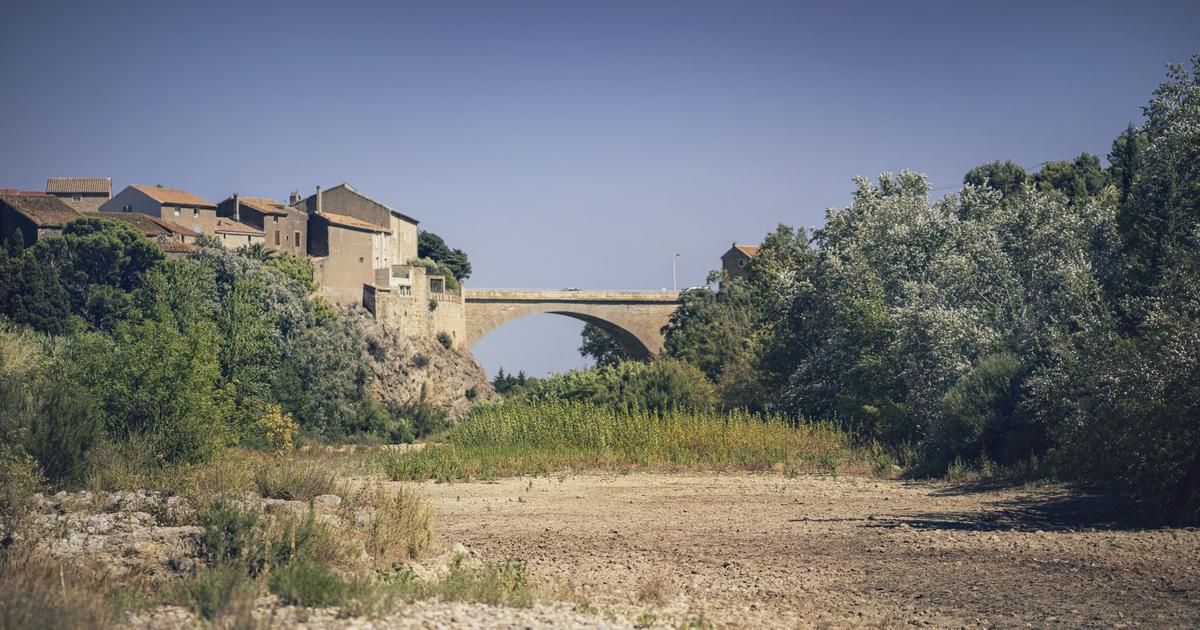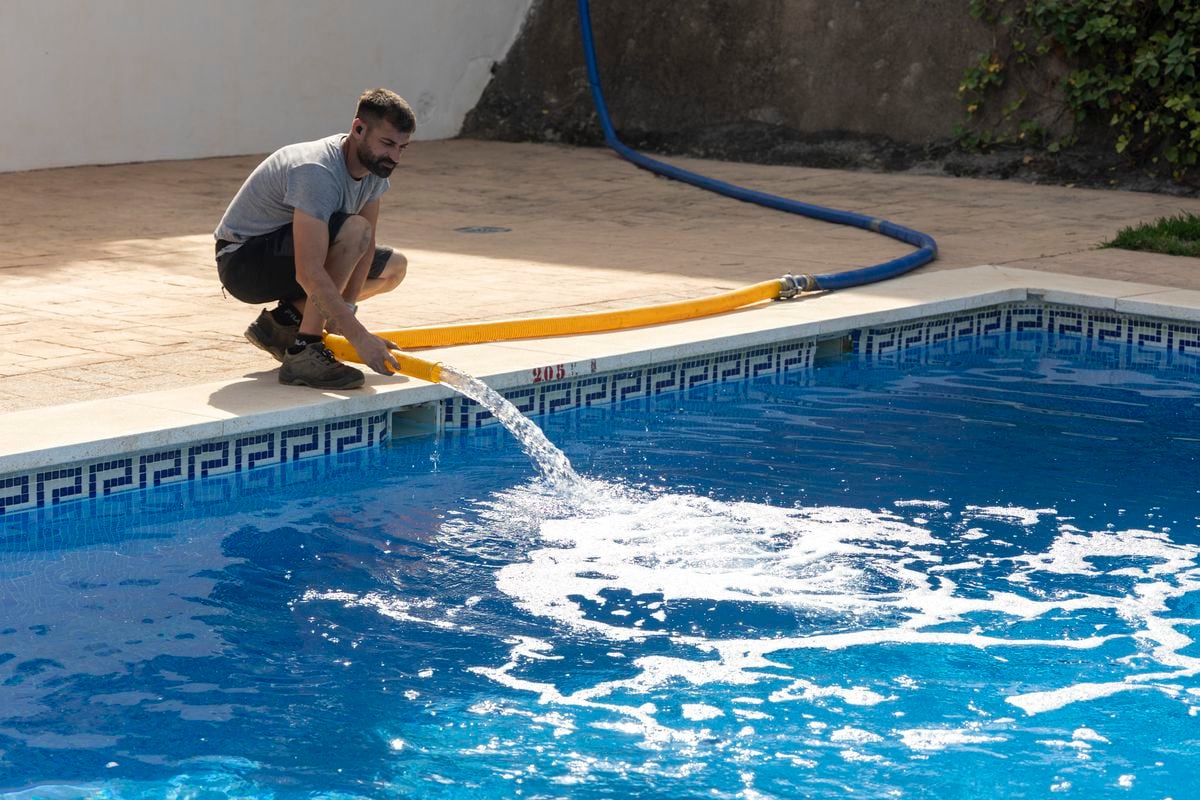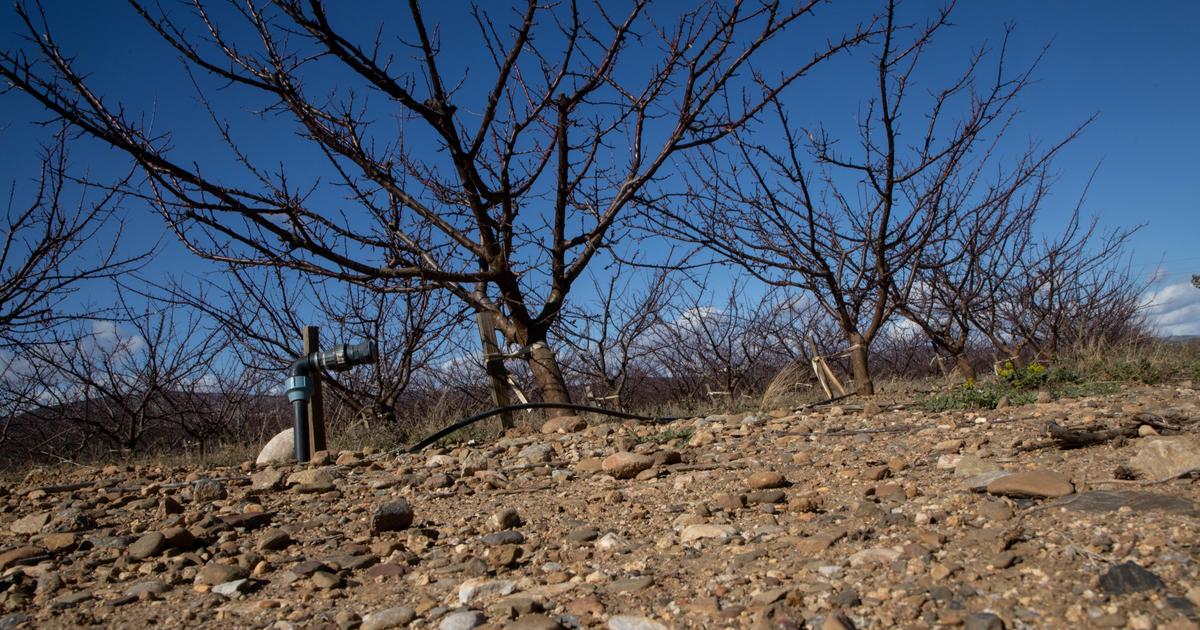Withered flowers, bare and browned trees, dead leaves crunching underfoot… Were it not for the stifling heat, you could imagine yourself in autumn.
Since the beginning of the summer, France has been suffocating.
The sky is dry, the soil cracked and the water reserves are dwindling.
According to the bulletin published by the Ministry of Ecological Transition on August 4, no less than 93 departments are beyond the threshold of vigilance.
In detail, 4 departments are at the first level of alert, 27 on heightened alert and 62 are deemed to be in a crisis situation.
“A combination of two factors makes the situation particularly worrying
, explains Cyrille Duchesne, meteorologist at La Chaîne Météo (chain of the Figaro group).
We had a particularly dry winter and spring, so we started the summer with low levels in most water tables.
Added to this is a scorching summer season with a lack of lasting rain.
The whole country is affected.
In this sense, this drought will perhaps be even more difficult than that of 1976, which mainly concerned the north-east of France.
Read also
Drought, fires: the most threatened French cities by 2040
Last winter saw a rainfall deficit of around 20% on average across the territory, which did not allow the groundwater to fill sufficiently.
"Spring made things worse
, adds Cyrille Duchesne,
since it is the third driest spring since 1959."
With the exception of the south-west of the country, which experienced a rainy episode in March, the groundwater level was already very worrying in early June in most of the territory.
Since then, we have had a particularly hot summer with little rain, which has only made the situation worse.
July 2022 is thus ranked second among the driest months of all months combined in France since the start of measurements, in 1958-1959, with an accumulation of precipitation of 9.7 millimeters, according to Météo-France.
“We do not yet have all the data to establish the precise level of the water tables at the start of August, but we already know that the emptying continues everywhere,
explains Jérôme Nicolas, head of the national network. monitoring the quantitative state of groundwater at the Bureau of Geological and Mining Research (BRGM).
We will therefore remain on the trends of last month, with reserves which are decreasing and which are already at very low levels over most of the country.
The lack of rain forces us to tap into the water tables that are no longer filling up.
Many decrees limiting water consumption have however been taken in the country.
They should make it possible to slow down the emptying of the reserves a little.
“Few stormy situations”
According to the July BRGM bulletin, the situation is particularly worrying in the Poitou-Charentes region, but also in Bourgogne-Franche-Comté.
“We also have a very significant rain deficit since last winter in the south-east of the country,
adds Cyrille Duchesne.
We are on the way to breaking all the records there.”
And for the next few weeks, the outlook is not very exciting.
“France has already experienced three heat waves, and a fourth episode of high heat is looming,
continues the meteorologist.
Despite some sporadic rain, we do not expect any improvement before the second half of August.
This lack of rain aggravates the surface dryness of the soil, with humidity levels again historically low, especially in the north-west of the country, in the Pays-de-la-Loire and around the Mediterranean.
These dry soils do not bring up moisture and maintain the hydraulic deficit.
Episodes of strong heat are not systematically followed by intense stormy episodes, as is usually the case.
“To feed thunderstorms, you need humidity and heat
, explains Cyrille Duchesne
.
We only had heat, so we had very few stormy situations this summer.
The conditions will a priori be more favorable after August 15.
See also
Farmers hit hard by drought
These summer rains would in any case not be able to reverse the trend.
"The water would fall on dry ground and would not penetrate deeply,
" explains Jérôme Nicolas.
Moreover, as long as the vegetation is still present, it mobilizes most of the hydraulic flow.
However, the rains could, locally, slow down the emptying of the water tables by watering the crops.
The groundwater filling period does not begin until October and lasts five to six months.
The only thing we can hope for is rains which will limit the drought on the superficial levels, which will make it possible to water without having to draw on the reserves.
The danger is that the depletion of groundwater leads to the drying up of lakes and rivers and thus considerably degrades ecosystems.





/cloudfront-eu-central-1.images.arcpublishing.com/prisa/R65LZW6EVZDNDFZPK25RWRQTVY.jpg)

/cloudfront-eu-central-1.images.arcpublishing.com/prisa/EZY3USHL75GFHJUQVOYWVDGKPM.jpg)

/cloudfront-eu-central-1.images.arcpublishing.com/prisa/YVHMWL7DMVBDDK33L37HIKIMP4.jpg)